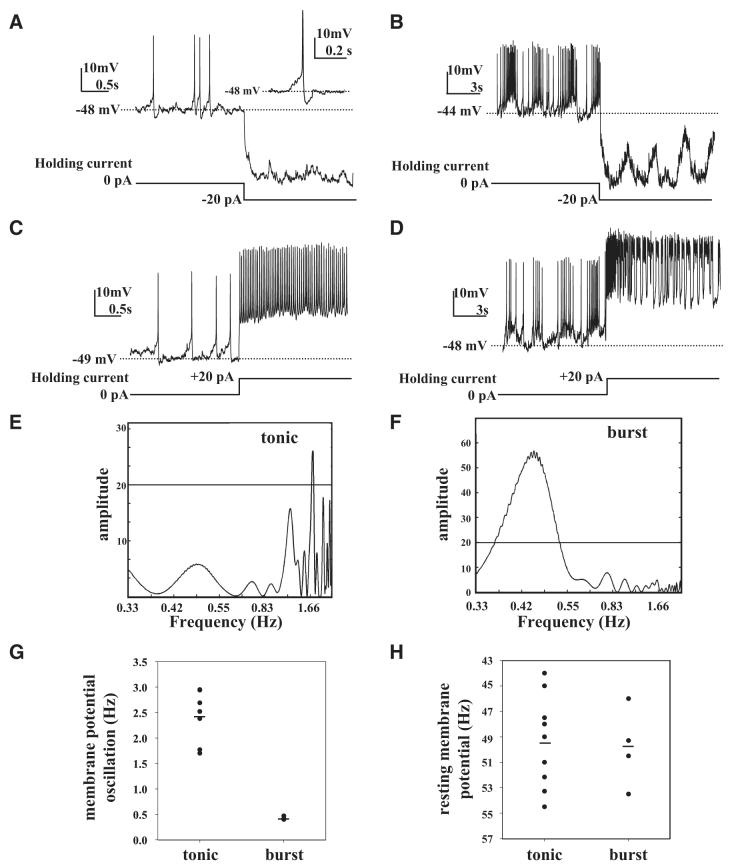Fig. 1.
Spontaneous tonic and burst firing action potentials of large ventral lateral (LNv) pacemaker neurons. A: representative trace of spontaneous action potentials measured by whole cell recording from a large LNv of freshly dissected brain from an adult fly showing tonic firing pattern. Spontaneous changes in membrane potential were measured in current-clamp configuration with 0-pA holding current. Hyperpolarizing current injection (-20 pA) step from 0-pA holding current blocks spontaneous firing. At 0 holding current spontaneous action potentials (APs) show gradual depolarization approaching spike threshold, then a depolarizing spike followed by repolarization and afterhyperpolarization (inset: detail of single tonic AP). Tonic firing large LNv resting membrane potential is -49 ± 1 mV, n = 9. B: representative traces of large LNv spontaneous exhibiting burst pattern of AP firing measured in current-clamp configuration with 0-pA holding current followed by hyperpolarization (-20 pA) that blocks AP firing but not membrane potential oscillations. C: depolarizing current injection (+20 pA) step from 0 pA holding current increases tonic firing AP firing rate. D: depolarizing (+20 pA) current injection increases firing rate during burst firing. Mean resting membrane potential during burst firing is -50 ± 2 mV (mean ± SE, n = 4). E and F: representative periodograms obtained by Lomb—Scargle time-series analysis during tonic firing showing a single statistically significant period with frequency of 1.76 Hz (frequency range for tonic firing is 1.7 to 3.0 Hz, n = 9) and burst firing that shows a significant spectral peak around 0.45 Hz (frequency range for burst firing is 0.4 to 0.47 Hz, n = 4). During burst firing large LNvs exhibit low-frequency (0.49 ± 0.07 Hz, n = 4), high-amplitude (7 ± 1 mV, n = 4) slow oscillations in membrane potential that underlie the burst firing. G: scatterplot of frequency of oscillation in membrane potential as measured by Lomb—Scargle analysis during tonic and burst firing modes showing a higher range during tonic firing and no frequency overlap between tonic and burst firing modes. H: mean resting membrane potential during burst firing is -50 ± 2 mV (mean ± SE, n = 4), which does not differ significantly from tonic firing mode, as shown by scatterplot comparison.

